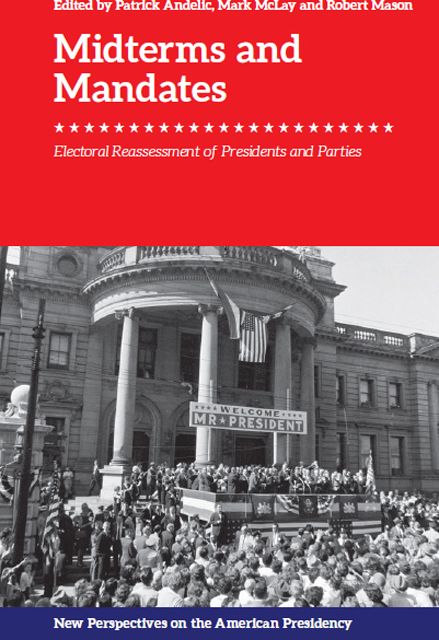Book contents
- Frontmatter
- Contents
- List of Figures and Tables
- Acknowledgements
- Notes on Contributors
- Preface: Why Midterms Matter
- Introduction: Midterms and Mandates, Presidents and Parties
- Part One Midterm Elections in Institutional Context
- Part Two Testing the New Deal Coalition
- Part Three The Republican Resurgence
- Index
4 - Swing Time: The New Deal Midterms of 1934 and 1938
Published online by Cambridge University Press: 07 June 2023
- Frontmatter
- Contents
- List of Figures and Tables
- Acknowledgements
- Notes on Contributors
- Preface: Why Midterms Matter
- Introduction: Midterms and Mandates, Presidents and Parties
- Part One Midterm Elections in Institutional Context
- Part Two Testing the New Deal Coalition
- Part Three The Republican Resurgence
- Index
Summary
Franklin D. Roosevelt’s landslide victories in the presidential elections of 1932 and 1936 are conventionally regarded by scholars as the primary indicators of the political realignment that occurred in the turbulent era of the Great Depression. A case can be made, however, that the midterm elections of 1934 and 1938 merit equal attention in any assessment of the scale of partisan change in the New Deal years – both in terms of its magnitude and limitations. In 1934, the Democrats added to their already huge majorities in both houses of Congress, thereby bucking the historic trend that the president’s party loses seats in at least one chamber in the midterm elections of his or her first term – for the only time between 1902 and 2002. On its front page, the New York Times adjudged the result ‘the most overwhelming victory in the history of American politics’ not only for the Democratic Party but also for Franklin D. Roosevelt and the New Deal. In 1938, by contrast, the Democrats’ loss of seventy-two seats in the House of Representatives was their second highest after the 105 lost in 1894. In picking up eight Senate seats, the Republicans also made their largest midterm gains hitherto in the upper chamber, going two better than their previous best in 1898. As a further indicator of GOP success, none of its incumbent congressional candidates failed to win re-election, an achievement unmatched until the 1994 midterms. According to the New Republic, the outcome made the future of liberalism, seemingly so assured a few years earlier, ‘full of danger and uncertainty’.
Although the national Democratic Party experienced triumph in 1934 and tribulation in 1938, the two midterm elections provided significant confirmation of the political realignment of the New Deal era that underwrote its majority status and predominantly liberal identity. The key difference between them was that the 1934 elections boosted New Deal liberalism and the 1938 elections constituted a setback for it. In the latter, FDR’s failure to purge conservative Democrats in the congressional primaries and the Republican revival in the congressional elections encouraged the development of an informal bipartisan conservative coalition in Congress. As well as stymying the prospects for further New Deal reform in the Depression decade, this alliance became a significant obstacle to the enactment of new liberal programmes for the next quarter century.
- Type
- Chapter
- Information
- Midterms and MandatesElectoral Reassessment of Presidents and Parties, pp. 97 - 118Publisher: Edinburgh University PressPrint publication year: 2022

